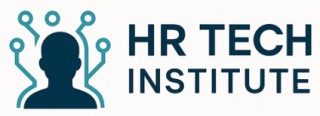The Role of Total Rewards Statements in Modern HR
Understanding the Evolution of Reward Statements in HR Practices
In today's competitive job market, HR professionals are continually seeking innovative ways to attract and retain top talent. Total rewards statements (TRS) have emerged as a vital tool in modern HR practices, providing employees with a comprehensive view of their total compensation package. These documents serve as an informative summary of the various components that make up an employee's compensation, beyond just the base salary. Employers are utilizing total rewards statements to convey the full array of rewards offered, including financial rewards, employee benefits, and other rewards strategies. By doing so, companies not only showcase the total value of an employee's compensation package but also enhance transparency, fostering trust between management and employees. Benefits such as health insurance, financial rewards, and work-life balance programs are clearly outlined, allowing employees to understand how their salary, leave policies, and other compensation benefits contribute to their overall rewards package. This approach helps employees appreciate the efforts their company invests in their well-being and professional development. Furthermore, with the right implementation, total rewards strategy can significantly improve employee engagement by making benefits more tangible and accessible. Companies are finding that when employees have a clear view of their compensation package and benefits total, they are more motivated and engaged. To gain a deeper understanding of the specific components that make these statements effective, exploring resources on crafting effective and comprehensive reward strategies can be advantageous. For those interested in how new employee perks are integrated into TRS, visiting this relevant resource on crafting the perfect welcome gift for new employees can provide further insights. In sum, total rewards statements play a crucial role in modern HR strategies, helping companies communicate their value proposition to employees effectively. As we continue to explore technology's influence and future trends in the subsequent sections, the pivotal role of these statements will become increasingly evident.Key Components of an Effective Total Rewards Statement
Essential Components of a Comprehensive Pay and Benefits Overview
In the bustling world of HR, total rewards statements act as pivotal tools to communicate the myriad components of an employee's compensation package. These statements are a comprehensive representation of a company's commitment to rewarding its employees beyond the regular salary or base pay. Here's a closer look at the key elements that make a total rewards statement effective.- Salary Framework: At the core of every rewards statement is the base salary. It forms the foundation of compensation and gives employees a clear picture of their financial rewards.
- Employee Benefits Information: This typically includes a list of benefits such as health insurance, leave programs, and any additional employee benefits. These can greatly enhance the work life balance for employees.
- Financial Compensation Benefits: Beyond the base salary, it's crucial to detail any bonuses, stock options, or incentive programs that contribute to the total reward package. Such financial rewards can be compelling for long term employee retention.
- Comprehensive Access to Data: Employees should be able to easily access their total rewards statements, which should include all relevant data. This helps employees understand the holistic value of their compensation package which, in turn, boosts employee engagement.
- Benefit Programs and Support Offerings: Highlighting various support programs can showcase a company's investment in employee well-being. For instance, effective integration of mental health resources can significantly contribute to employee satisfaction and retention. For more insights, consider exploring this HR-tech perspective on mental health integrations.
Technology's Influence on Total Rewards Statements
Navigating the Technological Landscape of Total Rewards Statements
The evolution of technology has significantly reshaped how organizations present total rewards statements to their employees. In an era where data is pivotal, the integration of digital tools streamlines the delivery and accessibility of comprehensive compensation benefits packages. Modern HR tech solutions empower companies to create interactive rewards statements that provide employees with a holistic view of their compensation package. These platforms allow for the dynamic presentation of base salary, financial rewards, and additional employee benefits such as health insurance and work-life programs. A key benefit of utilizing tech in crafting these statements is the ease with which employees can access and understand their total rewards package. Through user-friendly portals, employees can conveniently explore their compensation, benefits, and rewards, ultimately enhancing their perception of value and engagement. Moreover, data analytics play a crucial role in personalizing rewards strategies based on employee demographics and preferences. Companies can leverage this data to tailor rewards that align with the long-term aspirations of their workforce, promoting higher retention and satisfaction rates. Additionally, technological advancements facilitate transparency in the presentation of rewards statements. With clear, precise breakdowns of compensation packages, employees are more likely to appreciate the completeness of their financial and non-financial rewards, fostering trust and loyalty. The integration of these technologies not only enhances the presentation of total rewards statements but also supports the broader goals of modern HR strategies. For more insights on enhancing managerial feedback in HR tech solutions, click here.Benefits of Total Rewards Statements for Employee Engagement
Enhancing Engagement through Transparent Communication
When it comes to boosting employee engagement, one of the most effective tools available to HR professionals is the total rewards statement. By providing a comprehensive overview of the compensation package, including both base salary and non-financial rewards like health insurance, these statements clarify the full value that a company offers its employees.
Detailed rewards statements break down the complex mix of financial and non-financial components of a rewards package. They allow employees to see beyond their direct pay, highlighting their additional employee benefits, such as work-life balance initiatives or the company's contribution to their long-term goals through retirement plans.
Employee Empowerment through Information
- Access to data: Reward statements offer transparent and easily accessible information on the entirety of an employee's pay package, fostering a sense of trust and ownership.
- Informed decision-making: With a clear understanding of their total rewards, employees are better equipped to make knowledgeable decisions about their career trajectory and personal financial planning.
The transparency and clarity provided by total rewards statements not only help employees appreciate their compensation benefits but also play a crucial role in reinforcing their loyalty to the company. When employees perceive that their efforts are being recognized and rewarded effectively, their motivation and engagement naturally increase.
Challenges in Implementing Total Rewards Statements
Facing Hurdles in Implementing Total Rewards Statements
Introducing total rewards statements can be challenging for companies, impacting the way they communicate compensation benefits to employees. One significant hurdle is the integration of various components of the rewards package, such as base salary, financial rewards, and employee benefits, into a comprehensive statement.
Another challenge lies in accurately compiling and maintaining data. Ensuring that employees have access to precise and updated statement data requires efficient data management systems. Many companies struggle with gathering information from disparate sources, including compensation packages, health insurance plans, and long-term rewards strategies.
Navigating these obstacles also involves dealing with technological limitations. Organizations may face compatibility issues with existing HR systems, complicating efforts to automate the delivery of rewards statements and making it difficult for employees to access valuable information easily.
Moreover, achieving employee understanding and buy-in presents a challenge. Employees may find it hard to relate their financial rewards and benefits total to their overall work life satisfaction without clear communication from HR. As such, educating employees about the value of their total rewards package is crucial.
Lastly, the dynamics of changing workplace policies, such as leave programs, require that total rewards statements are continuously updated. This ongoing effort demands investment in technology and human resources to keep the statements reflective of current company practices.













